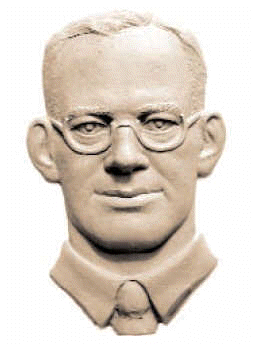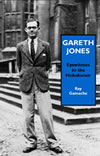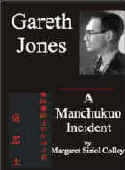Gareth Jones
[bas relief by Oleh Lesiuk]
HOME |
Stop Press |
Complete Soviet Articles & Background Information |
Précis of Gareth's
|
All Published Articles |
BOOKS
|
|
|
|
More Than Grain of Truth(2005) |
|
|
TOPICAL
'Are you Listening NYT?' U.N. Speech - Nov 2009 |
Gareth Recognised at Cambridge - Nov 2009 |
Reporter and the Genocide - Rome, March 2009 |
Order of Freedom Award -Nov 2008 |
Premiere of 'The Living' Documentary Kyiv - Nov 2008 |
Gareth Jones 'Famine' Diaries - Chicago 2008 |
Aberystwyth Memorial Plaque 2006 |
GENERAL
Scholarship Fund |
Site Map |
Links |
Legal Notices |
Sponsored Links |
Contact |
|
We went down the hill. We entered the courtyard, and saw this dazzlingly painted entrance with the two green statues of lions. They looked like Chinese lions, but with funny heads. Two soldiers stood with fixed gleaming bayonets. They saluted and presented rifles to us as we passed and we entered another courtyard. We waited, seated, in a room in the palace until a big man in a dark blue silk robe with a skullcap, on which there was a red button and having a very long pigtail, came in. He had a reddish face, rather cunning and looked about 45-50. He was the Prince. His counsellor, a dignified wrinkled man with a strange headdress, accompanied him. We bowed and grinned. Müller said we would like to sleep in a yurt. The Prince bade his servants take us and we went to a courtyard where there were three yurts. We were taken to the further one (a soldier with a fixed bayonet guarded the second, because it contained the Prince’s seal). We entered the tiny door and found ourselves in a brilliantly coloured interior. All round the circular wall there were bright red, shut boxes with golden designs of bats, which is a sign of good luck. There were two big chairs, opposite the door, against the wall, but we were requested not to sit in them, because they were for the high lamas. Just near the door there was a red and gold open box full of dry horse manure. In the middle under the opening there was a space with a fireplace. On the left of the two lamas chairs was a Tibetan Buddhist altar with three gold Buddhas. On each side were offerings of raisins, dates, sweets and dried prunes. A piece of yellow cloth hung down from it. Beside it was a blue tapestry and cylinders for prayer in a glass case with gilt dragons above and fishes below. As well as these, was a picture of the Panchen Lama with a fluffy, hairy dog and a painting of Buddha with four hands (two folded and two outstretched) arising out of a Lotus flower. There was room for four of us to sleep on the floor. When Mongols greet each other, they take out their beautiful snuff bottles of different colours and stones, hand them to one another, pretend to sniff and hand them back. I met Mr Pao, a Chinese man, who had been captured by the Communists and had been kept prisoner. He seized one of their hats, walked out, and escaped. The temple has a Chinese influence. Before the entrance is a courtyard and on the north and south sides are prayer wheels. A man with a conical hat and a red cloak and prayer beads turns each cylinder. |
Gareth at the Lama service. |
|
|
|




